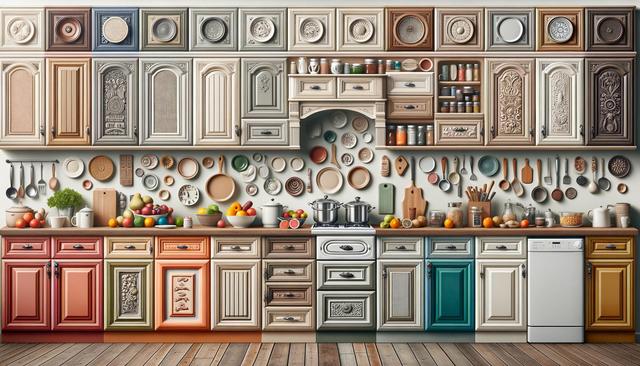Understanding the Benefits of Rubber Flooring
Rubber flooring has increasingly become a preferred choice in a variety of settings due to its durability, safety features, and ease of maintenance. Whether used in gyms, schools, healthcare facilities, or play areas, rubber flooring offers a unique combination of comfort and resilience. One of its most notable advantages is its shock-absorbing quality, which helps reduce fatigue and minimizes the impact on joints—ideal for high-traffic and high-activity environments.
Moreover, rubber is inherently slip-resistant, contributing to safer walking surfaces, especially in areas prone to moisture. Its water-resistant nature also makes cleaning and maintenance relatively hassle-free. Unlike carpets that can trap dust and allergens, rubber flooring supports better indoor air quality, making it a practical choice for environments where hygiene is critical.
Key benefits include:
- Durability and long lifespan
- Slip and water resistance
- Noise dampening qualities
- Low maintenance requirements
- Eco-friendly options available
These features make rubber flooring a sustainable and practical investment across various industries and settings.
Types of Rubber Flooring Solutions
There are multiple types of rubber flooring available on the market, each designed to meet different functional and aesthetic needs. The most commonly used types include rubber tiles, rubber rolls, and interlocking mats. Rubber tiles are popular in commercial applications due to their easy installation and replacement options. They can be customized in terms of thickness and color, allowing for design flexibility.
Rubber rolls, on the other hand, are ideal for large areas, such as fitness centers or sports arenas. They offer seamless coverage, reducing the number of joints and seams where dirt can accumulate. Interlocking mats provide a versatile and portable solution, often used in temporary setups or areas that require frequent layout changes.
Each option has its strengths:
- Rubber tiles: Modular, easy to replace, and customizable
- Rubber rolls: Seamless, cost-effective for large areas
- Interlocking mats: Portable and user-friendly setup
Choosing the right type depends on factors such as foot traffic, moisture exposure, and the specific needs of the space.
Applications Across Different Industries
Rubber flooring solutions cater to a wide range of industries, thanks to their adaptability and performance characteristics. In the fitness industry, rubber flooring is a staple due to its ability to absorb impact and reduce injuries. It’s also easy to clean, which is essential in high-sweat environments. In educational institutions, it provides a safe and durable surface for classrooms, hallways, and gyms.
Healthcare facilities benefit from rubber flooring’s hygienic properties and comfort underfoot, which is important for both patients and staff. Similarly, in commercial kitchens and foodservice areas, rubber flooring offers slip resistance and ease of sanitation. Even residential spaces are seeing increased use of rubber flooring, particularly in basements, home gyms, and playrooms.
Common settings include:
- Gyms and fitness centers
- Schools and daycare centers
- Hospitals and clinics
- Commercial kitchens
- Homes with high-activity zones
The versatility of rubber flooring makes it suitable for nearly any environment where durability and safety are priorities.
Maintenance and Care Tips
One of the most attractive features of rubber flooring is its low maintenance requirements. However, proper care is essential to maximize its lifespan and maintain its appearance. Routine cleaning typically involves sweeping or vacuuming to remove debris, followed by damp mopping with a pH-neutral cleaner. It’s important to avoid harsh chemicals, as they can damage the surface and reduce the flooring’s effectiveness.
In high-traffic areas, periodic deep cleaning may be necessary. This can be done using an auto-scrubber with soft brushes or pads. Sealing isn’t always required, but in some commercial applications, a water-based sealant can enhance durability and appearance. Additionally, placing entry mats at doorways can help reduce the amount of dirt and moisture brought onto the flooring.
Maintenance checklist:
- Daily: Sweep or vacuum debris
- Weekly: Damp mop with neutral cleaner
- Monthly or as needed: Deep clean high-traffic areas
- As needed: Inspect for damage or wear and replace tiles if necessary
With consistent care, rubber flooring can maintain its functionality and visual appeal for many years.
Environmental and Safety Considerations
Rubber flooring is often praised for its environmentally friendly attributes. Many options are made from recycled materials such as used tires, which helps reduce landfill waste. These products are not only sustainable but also contribute to green building certifications. Furthermore, rubber flooring is free from harmful substances like PVC and phthalates, making it a healthier choice for indoor environments.
In terms of safety, rubber flooring meets various fire-resistance and slip-resistance standards, making it suitable for public and commercial spaces. Its cushioning properties help minimize injuries from falls, which is particularly beneficial for children and elderly individuals. Additionally, some manufacturers offer products with antimicrobial properties, further enhancing hygiene in sensitive settings.
Environmental and safety highlights include:
- Made from recycled materials
- Low VOC emissions for better air quality
- Free from harmful chemicals
- Slip-resistant and fire-retardant options
- Antimicrobial surface treatments available
These features make rubber flooring a responsible and safe option for a wide range of applications, aligning with both environmental goals and safety standards.
Conclusion: Choosing Rubber Flooring with Confidence
Rubber flooring solutions offer a practical, safe, and environmentally friendly choice for various residential, commercial, and institutional settings. With multiple types, styles, and installation options available, it’s easy to find a product that fits specific needs and environments. From reducing injuries in gyms to enhancing hygiene in healthcare, rubber flooring delivers dependable performance and long-term value.
Whether you’re outfitting a home gym, designing a school hallway, or planning a commercial kitchen, rubber flooring stands out as a well-rounded solution that supports both functionality and aesthetics. By understanding its benefits, applications, and care requirements, users can make informed decisions and enjoy the advantages of this versatile material for years to come.


